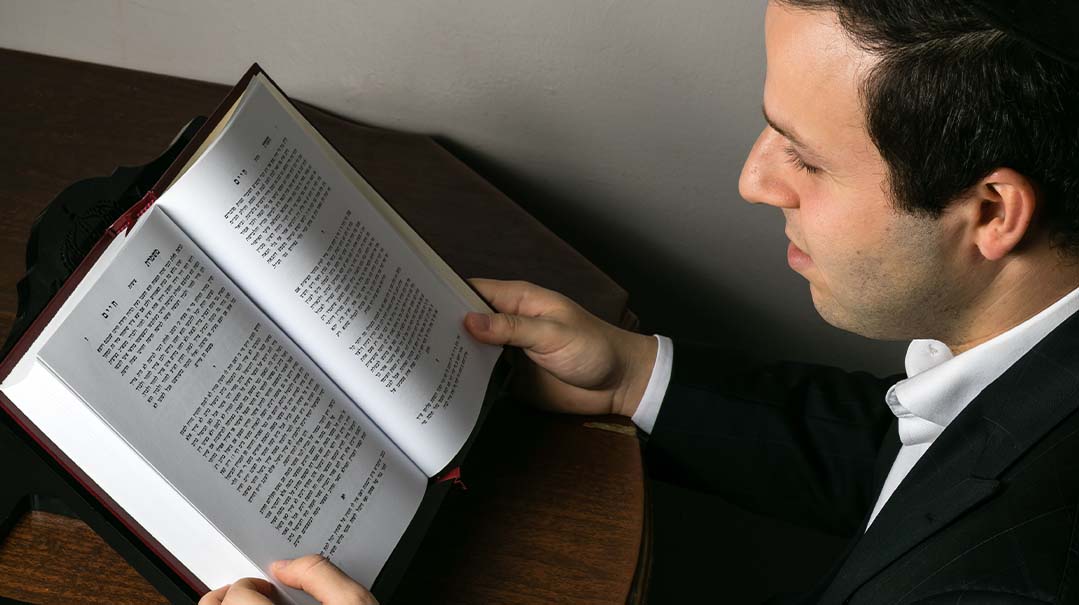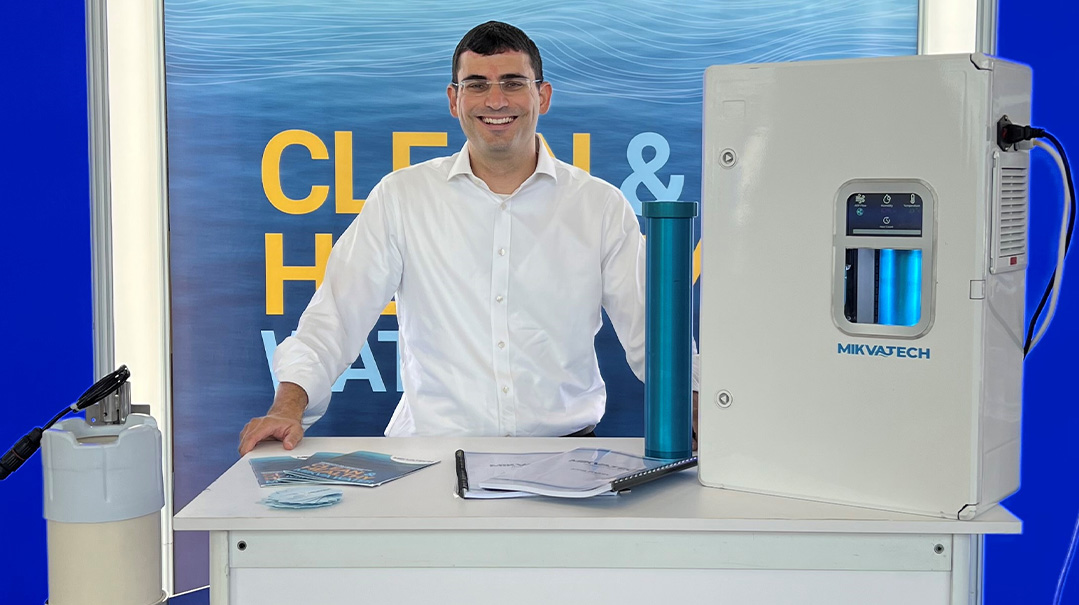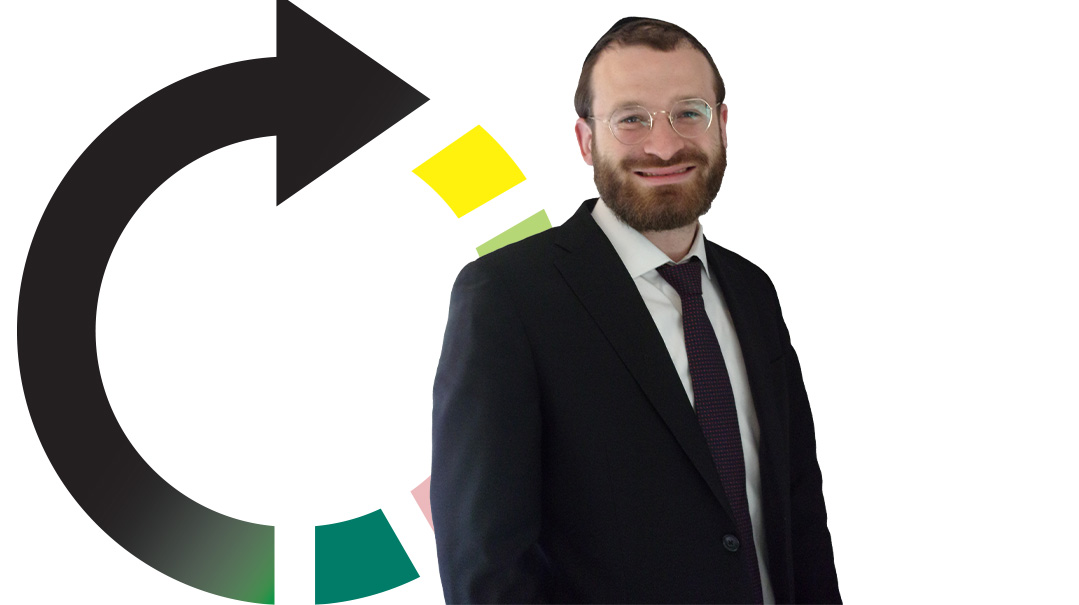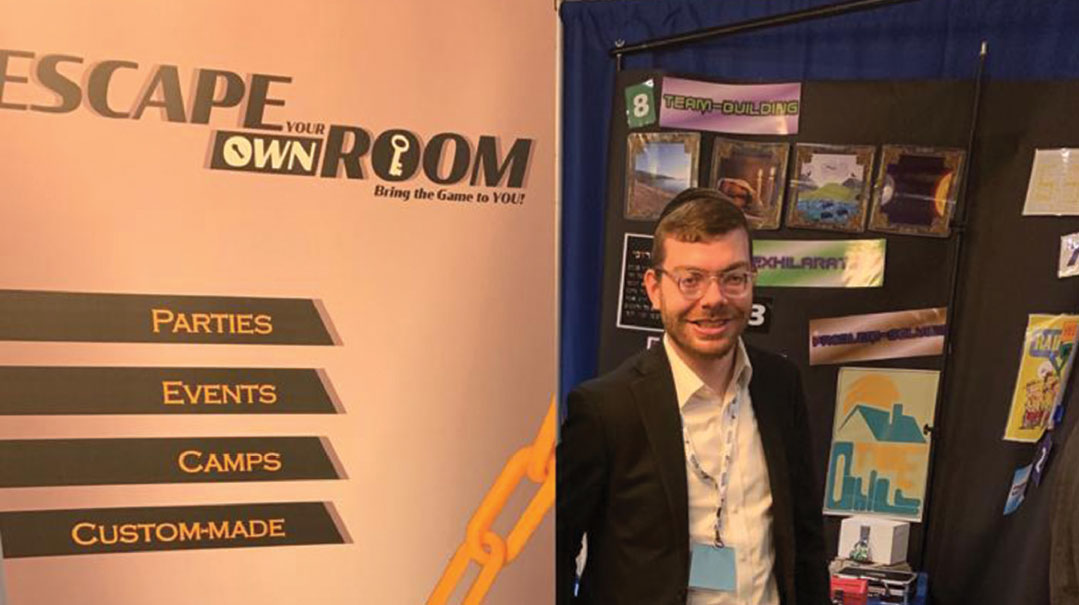A Day in the Life of…Rabbi Yonason Rosenblum

Rabbi Yonason Rosenblum is the man behind The Mishmar Shaila, a weekly sh’eilah challenge. He’s based in Queens, New York

What I do
I text out a lomdish sh’eilah every Thursday night to thousands of subscribers — lamdanim, as we call them — and they have a chance to respond with their answers. I send the answer out after Shabbos.
What that means
I get sh’eilahs from Rav Chaim Pinchas Scheinberg ztz”l’s sefer Mishmeres Chaim — it’s all the sh’eilahs Rav Scheinberg asked his talmidim in yeshivah Thursday nights. They’re fun and exciting, like, “Why isn’t it an aveirah [mei’ikar d’dina] to cook liquid a second time on Shabbos, but it is an aveirah to cook milk and meat together a second time?” Or, “One may not kill another person to save one’s own life, since one doesn’t know his own life is more valuable, but one who finds two people drowning should save the more choshuv person. Why do we say it’s possible to know who’s greater by drowning, but by killing it isn’t?” — this was one of the most popular questions. The answers are deep and lomdish and require a lot of work, lamdanim can quote tens of sources from all over Shas and other seforim to support their answer.
Why this sefer
The maileh is that each of Rav Scheinberg’s sh’eilahs has a clear focus, it’s contained, basically a mini-sugya, unlike open-ended sugyas in Shas where there’s no end and you can come out with little or no clarity. The rosh yeshivah Rav Dovid Leibowitz ztz”l said the very definition of a lamdan is someone who has clarity, because he knows what he knows and knows what he doesn’t know. He has a strong grasp of the Torah he’s learning, even if he doesn’t know the answer to his question, and the first time he learns the sugya, it can be overwhelming and vague, but as he reviews it, he’ll get clarity. These sh’eilahs can actually train you to learn like a lamdan. That’s what Rav Scheinberg wrote in his hakdamah about his talmidim who compiled the sefer: aside from gaining bekiyus in all areas of Torah, learning these sh’eilahs brings you to iyun haTorah, a depth of learning and clarity that give you the ability to reach new heights and become gedolei Torah.
My schedule
Shabbos morning: Pick that week’s sh’eilah.
Sunday, Monday, Tuesday, Wednesday: Learn it with different people to get their perspectives, keep it fresh, and concretize the information — the Steipler says you’re holding in learning after you review it four times
Monday: Find mareh mekomos through Otzar HaHochma to post on the app
Monday or Tuesday night: Learn mareh mekomos with my Mishmar Shaila chavrusa
Tuesday: Review it all with an older lamdan to make sure I have it right
Wednesday, after night seder: Finalize the sh’eilah with the chaburah and send it to someone to edit so the text is clear
Thursday: Send the question to lamdanim at 7:30 p.m. EST via text, the Mishmar Shaila app, and email, and post the video to Torah Anytime and audio to Kol Halashon
Thursday, Friday, Motzaei Shabbos: Responders review the answers that come in
Motzaei Shabbos: Send out the answer at 10 p. m. EST.
Our team
I run it, but there are so many people in Chofetz Chaim in Queens, where I am now, who help. There are my chavrusas, who learn the sugya with me. There’s the chaburah of five guys — we want to keep it small. We eat sushi for 15 minutes before hocking the sh’eilah, 45 minutes or even double that so I can prepare the question properly. We have a “bahelfer” — someone who helps by clarifying what people in the chaburah are saying, the good points and what needs to be explained. There’s also an editor who makes sure the sh’eilah text is clear. We have responders, they’re older guys who have been learning in yeshivah for many years, they’ll spend hours preparing the sh’eilah to make sure they’re really holding so they can go back and forth with lamdanim submitting responses. And there’s more!
Subscriber base
All types of lamdanim from around the country and beyond. In the very beginning, my friend heard guys from a different yeshivah schmoozing in learning at a wedding in Toronto about the Mishmar Shaila; that was exciting! An older balabos in Flatbush told me he has a seder every Friday learning that week’s sh’eilah, and I’ve heard from rabbanim who use it for a shiur. In Torah Vodaath, the bochurim started hocking a group of us up about Mishmar Shaila. Two of my friends were in Miami for a Shabbos, their host started hocking the sh’eilah at the Shabbos table. My friend didn’t recognize the halachah or concept, but the balabos strongly believed he was right, because “That’s what the Mishmar Shaila text said!” They checked after Shabbos and saw that the text had a typo, it said “meilah” instead of “milah.” Recently, a choshuve yungerman of BMG who sent in the correct answer with surprising clarity told us he worked on it until two in the morning!
Meeting you where you’re at
You can send your response as a beginner lamdan, intermediate, or advanced. Mishmar Shaila is for anyone, but it’s made specifically for yeshivah bochurim and yungeleit. It’s all texting, you don’t need an Internet connection to participate.
How I thought of Mishmar Shaila
I came up with the idea ten years ago when I was learning in Toras Chaim, the Chofetz Chaim yeshivah in Miami. Me and a few of my friends in the dorm would work on the sh’eilahs late at night, hoping to come up with the answer by the next morning. After a week or two, we thought about texting the question to a group in yeshivah every other night, followed by the answer the next morning. It was so popular, basically everyone signed up! My rebbi told me that it was an “ainfal,” like an epiphany, but he advised me to send it out only once a week — Thursday night — and send the answer Motzaei Shabbos, so people could have time to research and learn before getting the answer from us. The rest is history...
My, how we’ve grown
We’re now an official organization, Lamdanim Inc., and in October, we launched our app. It has mareh mekomos, an archive section, an audio recording explaining the question and with pointers for the question and answer, a place for people to submit answers, and more.
We’ve been on Kol Halashon for a while, and we just joined Torah Anytime. Monsey Mevaser runs a small article every week from us with a question and answer, and we email a weekly newsletter with answers to the previous week’s sh’eilah from subscribers, as well as he’aros, ein lomars, and other announcements. Every Rosh Chodesh, we have a raffle of people who submitted the correct answer, and the prizes are getting better as we get more sponsors. Recently, Mekor Judaica sponsored a menorah, and we’re hoping to raffle a megillah for Rosh Chodesh Adar Beis.
Back in the day
In the beginning, when we were operating only through text messaging, the service wasn’t so reliable — some phones didn’t receive the full sh’eilah when we sent it out to the list. Remember those days when texts would come in “broken” or half finished? When that happened, people would reach out directly for the full question. There was a shul rav who used the sh’eilahs to engage his balabatim on a weekly basis, he’d ask me to resend it every week. Baruch Hashem our texting service is more reliable now, we’re sending the texts from a computer.
Divine Providence
A year and a half ago, a donor gave $5,000 toward the development of an app. I spoke with a rosh yeshivah to see if it was okay, he gave us his brachah, so we started looking into it. A family member with experience in mobile apps said they’re a whole sugya, extremely expensive to develop; he helped us determine what features we’d want to include. We got quotes from app developers for between $15,000 and $25,000! Someone overheard me talking about this in yeshivah and told me his father is Imperial Technology, he does websites and that kind of stuff, and he might be able to help. I emailed his father and waited to hear back. Meanwhile, a donor who had pledged $1,000 a year earlier told me he’s ready to give the money, so we had $6,000 in the bank. The next day — no jokes, literally the next day — Imperial Technology emailed back, “We can do it for $6,000.”
Sound advice
My relative advised us not to have a “pilpul chaveirim” section on the app for users to discuss the questions, because forums are difficult to monitor, you never know what people will say, and we don’t want batalah or leitzanus. Also, it would mean our app wouldn’t be allowed on kosher smartphones. And practically speaking, it’s a very expensive feature to include.
Notable users
Once, after I said over a Mishmar Shaila at the Shabbos table in Chofetz Chaim in Israel, Rav Dovid Feinstein’s gabbai told us that he regularly asks Rav Dovid sh’eilahs people send him. He signed up for our text through an ad in the Yated, and he forgot about it. Thursday night, he got a sh’eilah via text and assumed it was for Rav Dovid, so he asked Rav Dovid the sh’eilah and sent back the answer. Meanwhile, the Mishmar Shaila answer was texted out that Motzaei Shabbos. When the gabbai got it, he thought, Wow, such chutzpah! This man is sending me his own answer to a sh’eilah he texted for the rosh yeshivah? Only later did he realize he’d asked Rav Dovid the Mishmar Shaila.
In Brief
Rapid growth
We’ve been doing Mishmar Shaila for a while, but we started advertising only recently, and we now have thousands of bnei Torah subscribers. That means we get hundreds of answers to the sh’eilah over the weekend, people send back literally pages of material.
Mistaken identity
People call us to ask random kashes in different gemarahs throughout Shas and also halachah sh’eilahs, as if we’re a general sh’eilah hotline.
Marketing magic
My friend had our bumper magnet with our slogan — “Are YOU a lamdan?” — on his car. He was in Boro Park, and a chassid bent down and was me’ayein in the magnet. “What is this?” he asked my friend — and then he signed up.
Next on the agenda
To ask gedolim to ask their own kashes on Mishmar Shaila.
Memorable feedback
“Your sh’eilahs are bringing good stuff out of me” and “I mamash felt like I was back in yeshivah Thursday night” — those are the best.
Jewish Geography
When I was single, people would redt me shidduchim without even knowing who I was.
(Originally featured in Mishpacha, Issue 901)
Oops! We could not locate your form.






